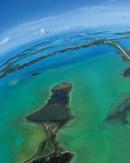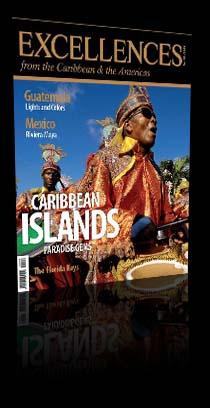The Florida Keys. A Magic Escapade
Setting out to visit the Florida Keys is a must-do for any savvy traveler. It’s true you can get there either by sea or by air, but neither way provides a chance to admire the surrounding scenery as a car drive does. The departure point for your trip is The Gateway to the Keys. From that moment on, it all appears as if you were hovering over a turquoise sea.
Something flabbergasting and occasionally magic pops up before your very eyes the moment you hit the road that leads to the Florida Keys. Landscapes, mangrove thickets and strips of turquoise sea are everywhere, with a few dots of solid ground along the way. The first photo op comes in Key Largo; the road boasts 42 bridges that cover a breathtaking 95-mile stretch. There are such picture-perfect spots as Alabama Jacks, a roadside bar whose patrons are local fishermen, tourists and locals wearing nothing but shorts, rustic sandals, tee-shirts and headscarves. For moments, the southbound route reveals deep mangrove thickets with a view of the Atlantic Ocean on one side and the Gulf of Mexico on the other side. There are other must-sees as well. Tavernier and Plantation Key, formerly the hideaway of choice of bootleggers during the Prohibition Law and that now harbors a school of marine life studies. Over there, liquor smugglers used to hide the rum brought from Cuba and Jamaica, so the tiny island became famous as a frolicking playground and the setting for big-time negotiations. A tad ahead stands Islamorada, and some 70 miles later, there’s a very popular spot with superb conditions for campouts and layovers called Fiesta Key Koa. The place is jam-packed with trailer homes and swimming pools equipped with everything it takes to guarantee a good stay for a few days. There are attractions galore all the way to Duck Key, with its fancy Hawks Resort & Marina. And a special moment will await you at the Seven Mile Bridge, a genuine engineering wonder. Now the sea turns into a darker turquoise shade and there’s more solid ground than on the other islands. The end of the trip is near, but first you drive past Big Pine Key –home to the Keys’ National Deer Reserve– and then comes Stock Island. Key West is the final destination. It’s worth the ride and you’ll surely be pleased. This is a place marked by a typical Spanish colonial architecture, elegant chalets, lush tropical gardens and fabulous beaches where your stay will be one to remember. To a naked eye, this is not an all-American location, save for the flag and the official language. The island was virtually “colonized” by Spaniards and Cubans from the largest Caribbean island –something that has lived out to date and can be easily found in its architecture, street names, the layout of parks and squares and even in the subtle smell of strong black coffee, rum and hand-rolled cigars sold at its many bars.
The road running through the Florida Keys is a genuine engineering masterpiece that includes 42 bridges and large portion propped on thick stilts of reinforced concrete that can endure hurricanes and have made it one of the world’s most beautiful thoroughfares





























































































































